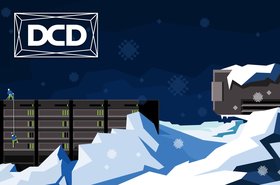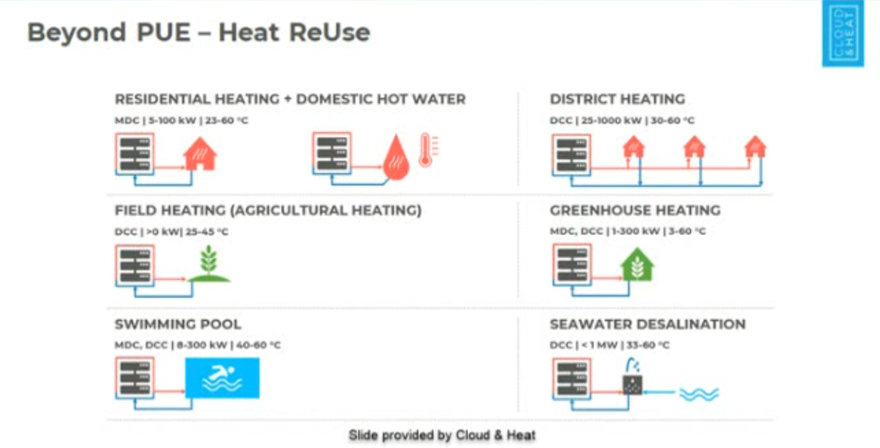Maximum heat re-use and, hence, sustainability will require data center operators to become more imaginative in terms of where and how data center heat is re-used, as well as adopting ‘cascade cooling’ in the data center.
Those were two of the main messages from one of the panel sessions at the recent DCD>Keeping IT Cool, ‘Re-using the heat - what should be done to align current data center business models with future sustainability goals?’
Frequently, the panel agreed, attempts to re-use heat by, for example, exporting it to district heating schemes have proved disappointing as the temperature of the exhaust heat is not high enough and needs to be treated. Alternatives, such as a scheme to heat commercial greenhouses in the Netherlands so that tomatoes can be grown throughout winter, also means that the exhaust heat is still wasted for half the year when it isn’t needed.
“Liquids, including immersion cooling, really change the game in terms of heat recovery,” said Dr. Andy Young, the chief technology officer at high-tech cooling specialist Asperitas.
Liquid cooling – particularly immersion cooling – not only enables the waste heat to more easily be captured, but to do so at higher temperatures and in a form that makes it easier to transfer and, hence, to re-use.
“But it's not only about looking at the server in isolation,” he continued. “You need to look at the wider equipment and systems you have locally. If you do that, work out how the systems extend inside the data center, you can stack up the Delta T [the additional temperature captured by the cooling system] in such a way that you can keep all of your equipment cold, and maximise the return temperature.
“In some cases, you can get really high return temperatures in that way, maximising the quality of the heat, which can be quantified by what's known as exergy. So if the heat quality is high enough you can put it to greater use with [for example] desalination, or using heat to cool. There are other applications around trigeneration, where you can use heat to generate power and cooling, as well,” said Young. “These are great examples of ways in which we can innovate.”
One way that Green Mountain has been able to re-used waste heat for all-year-round benefit, according to Svein Atle Hagaseth, Green Mountain’s chief sales officer, was by striking a deal with a lobster farm in Norway. Lobsters need relatively warm seawater (20°C/ 68°F) to grow, and have a penchant for cannibalism, so have to be reared in individual pens.
Located close to a salt-water fjord, Green Mountain's DC1-Stavanger data center takes chilled water from a depth of 100 meters and the discharge of the warmed water is supplied to the nearby lobster farm, enabling the creatures to be reared in an environment in which they wouldn’t normally thrive. For the farm, the arrangement has cut operational costs by 15 percent and capital investment costs by one-quarter.
That lobster farm project, said Hagaseth, arose from a survey the company had conducted to find more ways in which it could put its exhaust data center heat to genuinely good use, with lobster (and trout) farming found to be particularly good matches. “The heat from our DC1 data center is, coincidentally enough, 18 to 22 degrees celsius so they [the lobster and fish farms] can use that heat directly to heat their pools,” he said.
In the process, the lobster farm can breed a lobster to maturity in two years instead of five, which hasn’t just helped to make the project viable, it should also help provide a better class of fare in the staff canteen at DC1-Stavanger.
Miss any of the episodes from the DCD>Keeping IT Cool broadcast? Watch again on-demand, including the panel session, ‘Reusing the heat - what should be done to align current data center business models with future sustainability goals?’ with Asperatas’s Dr. Andy Young, Microsoft’s Vali Sorell, and Jaime Comella from Cloud&Heat Technologies. Panel moderated by Don Mitchell from the Open Compute Project.


